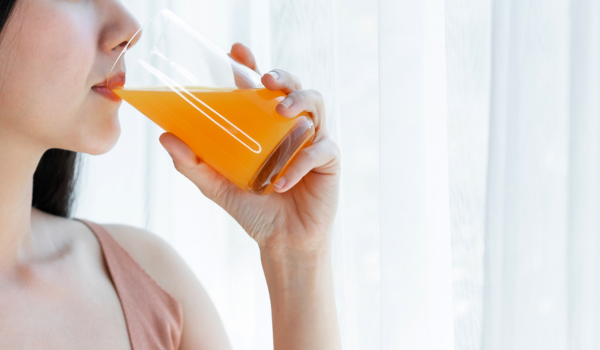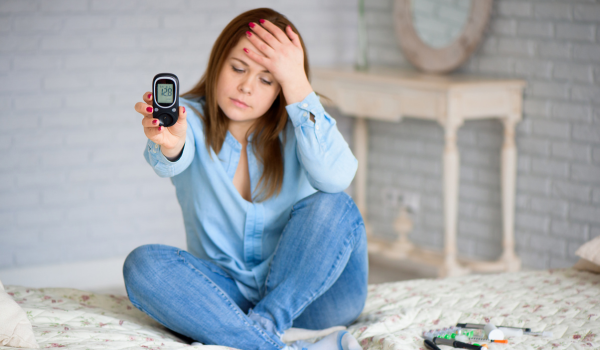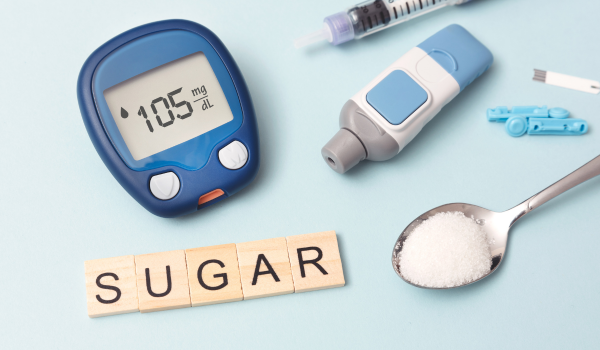The best foods to eat when your blood sugar is low are quick sources of sugar, such as fruit juice or hard candies. Hypoglycemia is when blood sugar levels drop below 70 milligrams per deciliter, and it is most common in people with diabetes, especially type 1 diabetes.
Symptoms of low glucose include dizziness, fainting, anxiety, and seizures. The 15-15 rule is often used to treat low blood sugar levels between 55–69 milligrams per deciliter. Foods and drinks containing about 15 grams of carbohydrates can quickly raise blood sugar. After eating, wait 15 minutes, then check your blood sugar again.
Best Foods To Treat Low Blood Sugar
Glucose gel
Glucose gel is specifically designed to treat low blood sugar. Most products come in individual tubes or packets, each providing 15 grams of carbohydrates for easy use.
Glucose tablets
Glucose tablets are made to quickly raise blood sugar and come in different flavors, available online or at drug stores. Serving sizes depend on the brand, so it’s important to read the label and follow directions.
Hard candies, jellybeans, or gumdrops
Candies made mostly of sugar, like hard candies, jellybeans, gumdrops, or Skittles, can also treat low blood sugar. The carbohydrate content varies, so check the package for serving size. For example, four Lifesavers hard candies provide about 15 grams of carbohydrates.
High-glycemic fruit
Certain fruits that rank high on the glycemic index (GI) can help raise blood sugar. About 15 grapes, half a banana, half a cup of applesauce, or one small orange all contain around 15 grams of carbohydrates. High-GI foods raise blood sugar quickly, making them better than low-GI fruits when treating hypoglycemia.
Juice or regular soda
Four ounces (half a cup) of fruit juice, such as apple or grape juice, can quickly raise blood sugar because it contains little fiber and no fat or protein. The same serving of regular soda also works since it is very high in sugar.
Sugar, honey, or maple syrup
Sweeteners are effective options to treat low blood sugar. One tablespoon of sugar, honey, or maple syrup can rapidly raise levels. You can also mix one tablespoon of granulated sugar with half a cup of water for easier use.
What Causes Low Blood Sugar?
Blood sugar naturally fluctuates throughout the day due to food intake and physical activity. While changes are normal, blood sugar that drops too low can be harmful.
Hypoglycemia is defined as levels below 70 milligrams per deciliter. Most people won’t notice symptoms at this level, but shakiness, confusion, and blurry vision often appear once levels drop below 55 milligrams per deciliter.
Diabetes
Low blood sugar is most common in people with diabetes, especially those with type 1 diabetes. People with type 1 are three times more likely to experience hypoglycemia than those with type 2.
Antidiabetic medications
Drugs such as insulin, sulfonylureas, and meglitinides are common causes of hypoglycemia in people with diabetes. Too much insulin, using the wrong type, or injecting insulin incorrectly can all lead to low blood sugar.
Diet
Low blood sugar may also result from poor timing of insulin around meals, very low calorie intake, or incorrect adjustment of insulin doses for carbohydrate intake and exercise.
Less common causes
Although rare, hypoglycemia in people without diabetes can occur due to alcohol use, malnourishment, certain medications, severe illness, or tumors.
How To Manage Blood Sugar
Most people with type 1 diabetes will experience low blood sugar at some point, but it can usually be managed easily with high-carbohydrate foods, drinks, or glucose tablets. Continuous blood sugar monitoring is key for prevention.
15-15 rule
For blood sugar levels between 55–69 milligrams per deciliter, the 15-15 rule is effective. Eat 15 grams of carbohydrates, wait 15 minutes, and check blood sugar again. If still below 70, repeat until levels normalize. Once stabilized, eat a balanced meal or snack to keep blood sugar steady. Avoid overeating, as too many carbs at once can cause spikes.
Injectable glucagon
When blood sugar falls below 55 milligrams per deciliter, it is considered severely low and cannot be treated with food alone. Injectable glucagon is needed, and friends or family should know how to administer it in emergencies.
Other Tips To Prevent Low Blood Sugar
-
Eat a balanced diet: Include fruits, vegetables, whole grains, lean proteins, and low-fat dairy while limiting foods and drinks high in sugar and sodium.
-
Have consistent meals or snacks: Regular eating helps prevent hypoglycemia. Learn the right carbohydrate amounts for your needs.
-
Limit caffeine and alcohol: Too much caffeine may mimic hypoglycemia symptoms, while alcohol can increase the risk of low blood sugar, especially without food.
Since everyone’s needs are different, people with diabetes should work with a healthcare provider or dietitian to create a personalized eating and insulin plan.
A Quick Review
Hypoglycemia, or low blood sugar, is common in people with type 1 diabetes and can usually be treated using the 15-15 rule: consume 15 grams of carbohydrates and recheck after 15 minutes. Foods like fruit juice, honey, hard candies, and glucose tablets are effective treatments.
Severely low blood sugar may require a glucagon injection. If you experience frequent episodes of hypoglycemia, consult a healthcare provider for prevention and management strategies.




